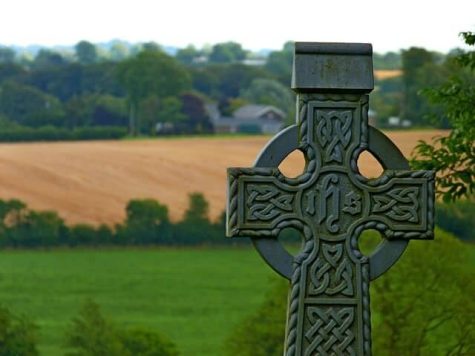Leprechaun Lore: What is Saint Patrick’s Day?
A four-leaf clover.
March 17, 2023
St. Patrick’s Day is a holiday full of leprechauns and four-leaf clovers. But what do these popular symbols actually mean? Who is St. Patrick? Do Camas High School (CHS) students know the real story behind the holiday and what it means?
“Money, rainbows, a lot of green…they spawned out of potatoes in Ireland,” said CHS student Taylor Redmond.
Redmond correctly stated that Leprechauns come from Ireland, but Leprechauns are not spawned from potatoes.
Leprechaun lore first originated in the 8th century among the Celts and was said to be a part of the fairy family. These 2-3 feet tall creatures are also said to get their gold from their occupation as a shoemaker.
Before Leprechauns were depicted wearing green, they were actually thought to be dressed in red, but the change is speculated to be due to the popularity of green from the Irish Flag.

Leprechaun symbolism is closely tied to a pot of gold. This is said to be the earnings of the Leprechaun, and if a human catches one, is granted the gold as well as three wishes. Other versions of the tale state that this is actually a trick used against greedy humans to teach them a lesson.
“It means that I am not very lucky because I never found many of them, maybe none,” said CHS teacher Gregory Plitt.
Four-leaf clovers are a symbol of luck due to their genetic rarity and are closely tied to St. Patrick’s day. Each leaf on a four-leaf clover represents something different; love, faith, hope, and luck. In Irish lore, the shamrock, which is a three-leaf clover, holds religious significance. In Christianity, the number three is representative of the Father, Son, and Holy Spirit. Although the importance of the clover to the Irish is not a four-leafed one, it is said Ireland is where they grow abundantly, coining the phrase “luck of the Irish.”
“Probably some dude from the Leprechauns,” said senior Chase Reed.
St. Patrick was not actually born in Ireland, but in Britain, and assumed to have died on March 17, 460 A.D. Patrick was said to be taken prisoner by Irish raiders at the age of 16, and kept in captivity for six years. Due to Patrick believing he had visions of God and an angel, he ended up staying in Ireland and teaching Christianity to the Irish as a priest. Patrick incorporated Irish traditions in his teachings, such as creating the Celtic cross, which is the sun on a Christian cross.


































